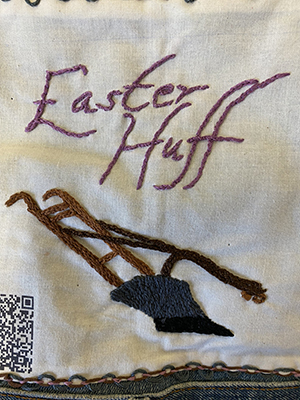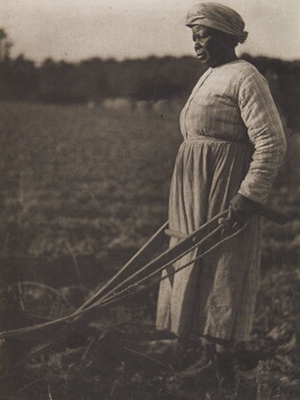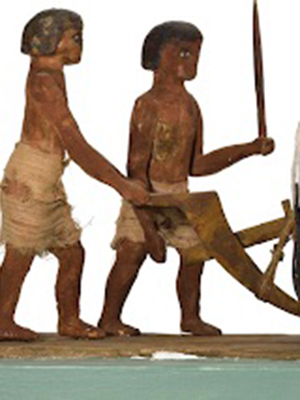Easter Huff
“I was born in Oglethorpe County on Marse Jabe Smith's plantation. Easter is my right name, but white folks call me Esther. Mammy was Louisa Smith…and was a plow hand.The big old cook house had a partition across it, and on one side Aunt Peggy did all the cooking for Old Marster’s household and for the slaves too. On the other side of the partition was the loom room where Aunt Peggy weaved all the cloth and Mrs. Lacy Hines, who lived on another plantation not far off from us, made all our clothes. Mammy, she made her little money knitting socks, and patching clothes at night, and she had saved up nigh $40.00 in Confederate money before the war. They called it Confederate shucks after because it weren’t no good no more then, and she let us children play with it.
The girl children in those days wore little slips, and the boys had shirts split up the sides. They just wore one piece in summer, no drawers or nothing.
I don't recollect how many acres were in that plantation, but it sure was a big one. There were about 25 grown slaves. The overseer got them up about three o 'clock and they stayed in the field 'til sundown before they started for the house. When they got home from the fields at night, the women spun, mended, and knit, and the men worked in their gardens and cotton patches. Winter nights they plaited baskets and made horse collars.” – Easter Huff
 Lev Sewald ’26
Lev Sewald ’26
Before any crop is planted, the soil needs to be dug to allow moisture and nutrients to fertilize seeds. At first, humans used sticks and other hand made tools, but for larger scale agriculture, the ancient Egyptians developed a plow pulled by an ox. This same design was used up until the 20th century, and was probably what Easter’s mother used. The ancient Chinese and later Greeks improved the implement by adding a wheel. Further advancements were made by the Dutch in the 1600’s and a Scottish inventor in 1763 added a curved iron blade.
With the Industrial Revolution came massive steam powered plows, which developed into gas powered tractors by the 1900s. Today’s industrial farms can use fully autonomous tractors, guided by real time GPS and outfitted with 360 degree vision cameras and sensors that can detect an array of environmental data including weather and soil conditions. Along with technology that monitors its own maintenance health, these robotic tractors can be accessed from the farmer’s mobile phone.
Sources
- Federal Writers' Project: Slave Narrative Project, Vol. 4, Georgia, Part 2, Garey-Jones. 1936. www.loc.gov/item/mesn042
- National Museums Scotland, The Story of the Plough
- Monarch, Autonomous Tractor: Helping with Farm Productivity

